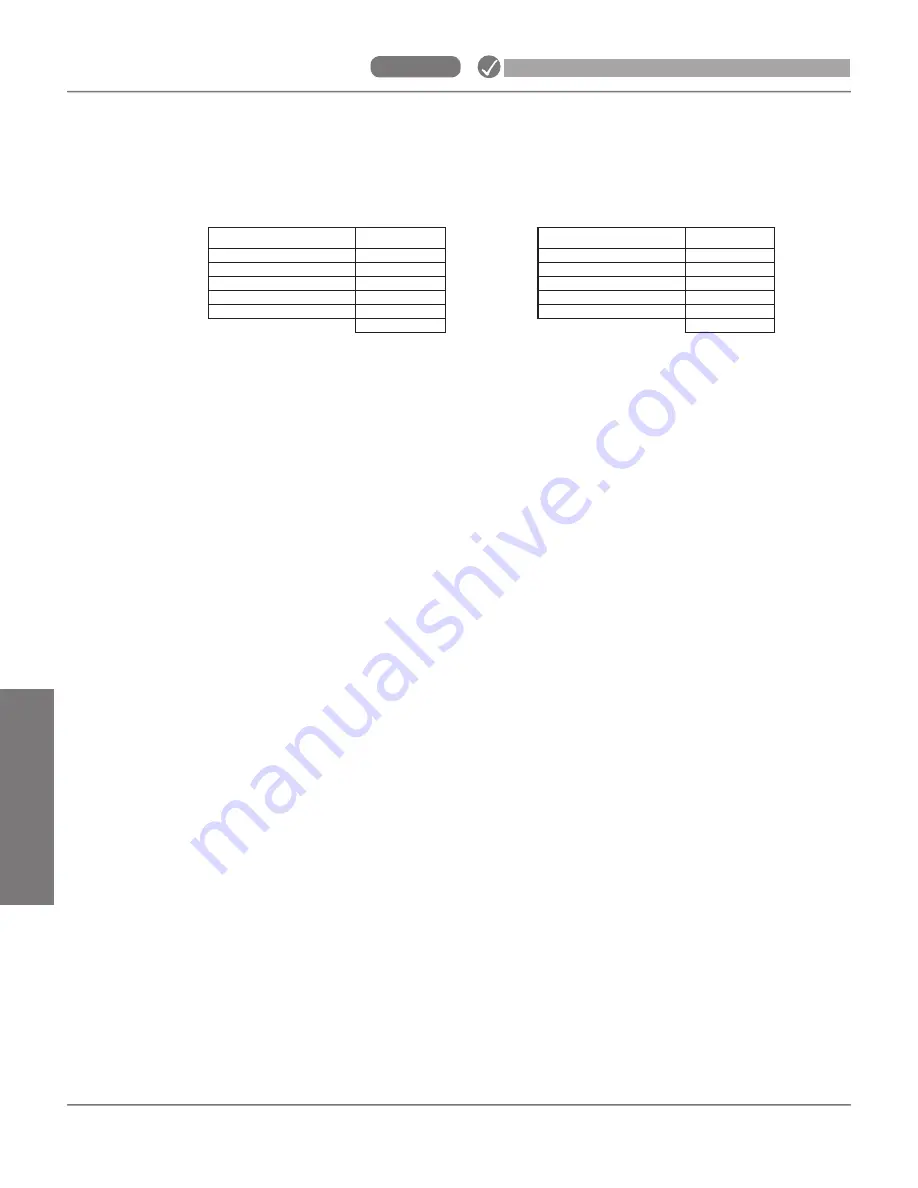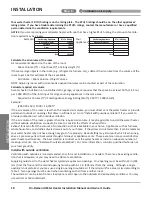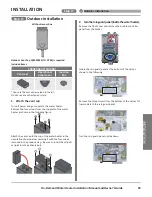
INS
TALLA
TION
18
On-Demand Water Heater Installation Manual and Owner’s Guide
Your water heater’s BTU/h rating is on the rating plate. The BTU/h ratings should be on the other appliances’
rating plates. If you have trouble determining the BTU/h ratings, contact the manufacturer or have a qualified
person determine the ventilation requirements.
NOTICE:
If you are replacing your old water heater with one that has a higher BTU/h rating, the amount of ventila-
tion required may be greater.
Gas Burning Appliance
BTU/h Rating
Gas Water Heater
199,000
Furnace
75,000
Dryer
20,000
Total
294,000
Example:
Gas Burning Appliance
BTU/h Rating
Gas Water Heater
Total
Your
appliances:
Calculate the air volume of the room
Air requirements depend on the size of the room.
Room Volume (ft
3
) = Floor Area (ft
2
) X Ceiling Height (ft)
If there are large objects in the room (e.g., refrigerator, furnace, car), subtract their volume from the volume of the
room to get a better estimate of the air available.
Air Volume = Room Volume - Object Volume
NOTE: Adjoining rooms with permanently opened doorways can be counted as part of the calculation.
Calculate required air volume
A water heater installed in an unconfined attic, garage, or space requires that the space be at least 50 ft
3
(1.42 m
3
)
per 1,000 BTU/h of the total input for all gas burning appliances in the same area.
Required Air Volume (ft
3
) =Total Appliance Energy Rating (btu/h) X 50 ft
3
/ 1000 (btu/h)
Example:
(294,000 x 50) / 1000 = 14,700 ft
3
If the air volume of the room is less than the required air volume, you must direct vent the water heater or provide
permanent outside air openings that draw in sufficient air. Go to “Install with outside ventilation” if you want to
provide combustion air with outside ventilation.
If the air volume of the room is greater than the required air volume, it may be possible to install the water heater
without outside ventilation. However, be sure to consider the effects of exhaust fans.
Exhaust fans can affect the amount of combustion air that is available in your home. Appliances such as furnaces,
whole house fans, and clothes dryers draw air out of your home. If they draw air out faster than it can be replaced,
your water heater may not have enough oxygen to fire properly. Back-drafting may also result, which is when neg-
ative air pressure pulls air backwards through chimneys or appliance vents. These events can cause unsatisfactory
water heater performance. The best solution is to direct vent the water heater or install an adequate number of
make-up air vents. (See “Install with outside ventilation”.) For more information, consult a qualified technician or
your local gas utility.
Install with outside ventilation
Ventilation with outside air is recommended, and, for most installations, is needed. There may be existing ventila-
tion that is adequate, or you may need to add more ventilation.
Supplying outside air to the water heater typically requires two openings. One opening must be within 12 in (305
mm) from the floor and the second opening must be within 12 in (305 mm) from the ceiling. Although a single
opening is not preferred, you may use a single opening to outside air if the minimum free area is sized according to
Table 1. Two openings must be used when ventilating with air from another room.
The outside air can be taken from a crawl space or attic open to the outdoors and adequately ventilated. You may
use vertical or horizontal ducts.
INSTALLATION
Step 6:
Combustion air supply
Содержание 160X3P
Страница 84: ...7J8071 1 2000570774 REV B...
















































